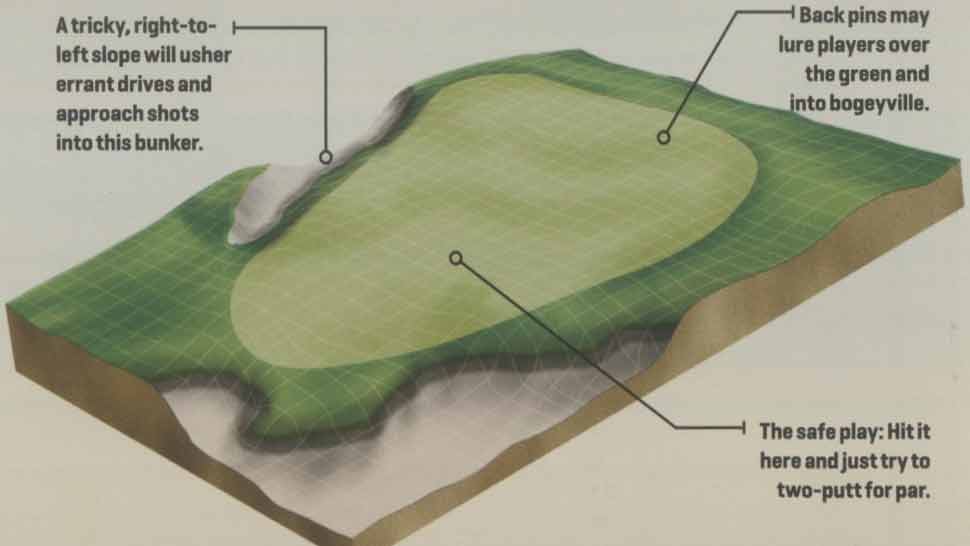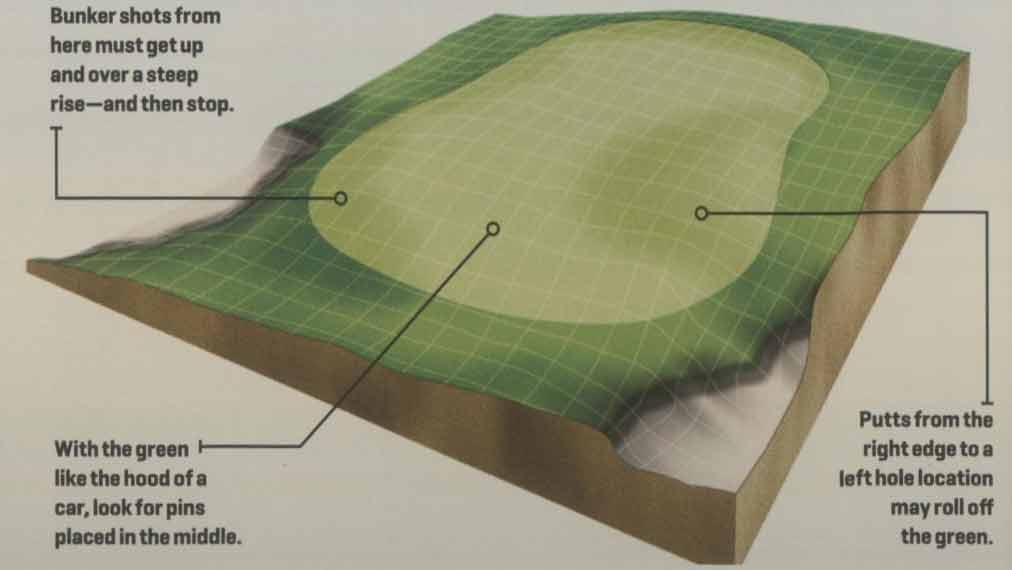Golf instruction is ever-evolving, but the best advice stands the test of time. In GOLF.com’s new series, Timeless Tips, we’re highlighting some of the greatest advice teachers and players have dispensed in the pages of GOLF Magazine. Today, we look back at a breakdown of the most difficult greens at Pinehurst No. 2 from our June 2014 issue. For unlimited access to the full GOLF Magazine digital archive, join InsideGOLF today; you’ll enjoy $140 of value for only $39.99/year.
Pinehurst No. 2 is unlike most golf courses you’ll play. It’s got no rough, and it’s nearly impossible to lose a ball. It’s not exceedingly long, and there aren’t a ton of dramatic elevation changes. Standing on most tee boxes you won’t find yourself very intimidated, but as you get closer to the greens, the challenge gets more and more severe.
Therein lies the genius of the Donald Ross gem. The course is extremely playable, but good luck posting a low score. Getting the ball near the greens is never much of a problem. Getting the ball in the hole feels impossible. Nearly all of that challenge comes from the crowned Bermuda greens.
Ambitious golfers travel from far and wide to tackle this challenge every day. This week, we’ll get to watch the world’s best do the same. Ahead of the 124th U.S. Open, we dug into our archives for a breakdown of the four most difficult greens on Pinehurst No. 2, courtesy of architect Bill Coore and Pinehurst’s director of course management, Bob Farren.
No. 3, par 4

Bob Farren: “The green is drivable under the right conditions, but if you go over, you’re in a sand areas, not grass. The left side of the green tilts to the left and down to the bunker, so players must be careful not to spin their approach shots back into that bunker. There’s enough slope and pitch on the green to make putting difficult, too. I feel that this and No. 5 are among Ross’ greatest greens because they’re right next to the house where he lived. He spent so much time there, he gave his full attention to them. When I’m on the course, I envision him on his porch, smoking his cigar and watching golfers putt on the third and fifth greens.”
Bill Coore: “Off the tee, the hole entices players to get as close as possible, but it’s tough to get up and down from anywhere around that green. Since it cants severely back to front, the worst thing is to hit it over the green. It’s spectacularly contoured and crowned to accept a pitch shot.”
No. 5, par 5

Farren: “It’s a reachable par 5, or a short-iron third shot, but the entire left side of the hole is a train wreck. The left two-thirds of the green breaks so hard that a lot of balls get putted off it. [USGA executive director and U.S. Open setup major domo] Mike Davis wanted to see this as a par 5 so that they could use great hole locations that were simply too difficult when it was a par 4.”
Coore: “I’ve never seen anything like this green, which is crowned so severely that you can only place the pin in the middle. Remember when some golfer compared hitting the green at the Stadium Course at TPC Sawgrass to trying to land the ball on the hood of a car? Well, this is really like that, but it’s a 1940s car with an elongated hood. I’m not sure there’s a green in golf where the usable square footage for hole locations is so small relative to the overall size of the green. I can’t imagine that any more than a third or even a fourth of the green is pinnable. It’s pure Pinehurst.”
No. 14, par 4

Farren: “Since this is a long par 4, the green isn’t as severe as some of the others, but it has enough pinch in it to make every putt and chip interesting. Any ball that winds up above the hole will make for a delicate next shot; getting the speed right will be a challenge. There’s plenty of fairway in front of the green, which will give players the freedom to run the ball up onto the putting surface, but if it goes over, it’ll roll far away. If they hit the right side of the green, the ball could slide into the green side bunker — and that bunker is the most penal. Relative to the green, it’s as deep as just about any bunker on the course.”
Coore: “This green is beautifully designed to fit the shot hit to it: deep need to be hit firmly enough to handle long- or mid-iron approaches but with less undulation.”
No. 15, par 3

Farren: “This great par 3 has two relatively new hole locations, one about two-thirds of the way back, on a plateau that wasn’t there before, and the other one middle-right. That one was brought back into play by moving the green closer to the right green side bunker. The right side of the green has a lot of pitch to it, and the entire front third has a lot of slope. If you find your ball above the hole, it’s bad news.”
Coore: “We expanded the green back to where it had been years ago, to accommodate some pine placements that had been lost. The pros will see a right-side pin closer to the green side bunker that wasn’t there in ’99 and ’05, when hole locations had mostly been in the middle of the green.”










